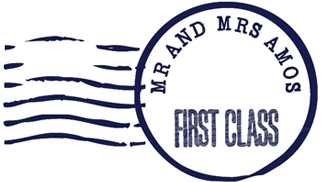The lost art of letters
Hand writing in the age of the hashtag
When I was searching through some old boxes the other day, I found a cache of letters sent to me in the 1980s when I was living in Manhattan.
In that dim and dark age, when phone calls between Australia and the USA were prohibitively expensive for a living-in-a-garret artist like me, we mailed our communications on lightweight onionskin paper or in those self-adhesive blue Aerogram folded letters. This was necessary because letters are charged by weight and we wrote a lot of words. Some of these letters even ran to pages!
Air Mail letters were a pleasure to read because, containing more than 140 characters, they were a time capsule into the emotions and thoughts, sometimes rambling, of my friends and family. Once read, they could be folded and put away and taken out another day to be read again. If they survived a few decades, they were a real insight into what preoccupied us at the time and a fascinating record of social history.
Most of us don’t keep diaries, so being handed back a bundle of letters that our younger selves wrote can be an emotional experience, sometimes deeply embarrassing but usually wonderfully illuminating in that they fill in the jigsaw puzzle of our lives.
I was in a junk store in Istanbul recently and I found a steamer trunk full of old postcards and family photos, mostly dating from the 1940s and 50s, the faces of hundreds of hopeful strangers staring up at me. The postcards were mostly in Turkish script, which became smaller and smaller at the bottom of the card as the writer tried to squeeze in all the information. That’s one of the most charming things about postcards – sentences are important, needing to be finished no matter how limited the space.
Most of us don’t keep diaries, so being handed back a bundle of letters that our younger selves wrote can be an emotional experience.
I’m sure a few of us have wondered what record we’ll leave for future generations now that our mementos are electronic. I still see postcard stands in tourist hot spots, so people must be sending them, but I haven’t received one, or an Air Mail letter, for years. I very rarely write them myself, I admit, but I did make an effort on the Orient Express this year because it’s done so beautifully, with the train’s own stamp. I even sent one to myself, as a keepsake.
If emails are our modern letters, then Instagram is the modern postcard. The advantage is that you can post one card and thousands of people may see it. But you can hardly say it’s intimate, as is the person-to-person postcard or letter. And it’s quickly consumed and forgotten. I can save my Instagrams as mementos of a trip but, apart from fleeting interest, they’re not going to be cherished by anyone else. The Instagram is becoming more a marketing tool and less a personal social interaction these days, which is why the humble postcard still has a purpose.
There is something forlorn about a trunk of discarded postcards, it’s true. On the other hand, there are a lot of people now recognising the worth of these old fashioned ways of communication. Postcards and photo albums, in particular, are collectible. There’s value in the souvenirs of ordinary lives – paper and card is as fragile as passing time.
Having said all this, I’m not sure I could write a legible long letter these days. I’ve noticed recently that my handwriting has deteriorated badly. I once printed so clearly I’m convinced I did well in high school tests because my work was easy to read. But now I can barely read the notes I’ve taken on trips. It’s probably physiological, from using my hands in a certain way to type (after all these years of banging out manuscripts, I’m still a two-finger typist) but it’s also from not holding a pen as often.
I’ve noticed that a few of my friends are enrolling for calligraphy classes, as a way to reclaim the lost art of beautiful handwriting. Digitally, the hashtag now rules and it’s not a pretty thing.
Instagrams are satisfyingly instant – taken, filtered, tagged and sent to the world in less than five minutes if you’re adept. Postcards have to be sought, and bought, and written on and then stamps and mailboxes have to be found. But that’s the point, really. Effort is meaningful in the era of the ‘send’ button.
